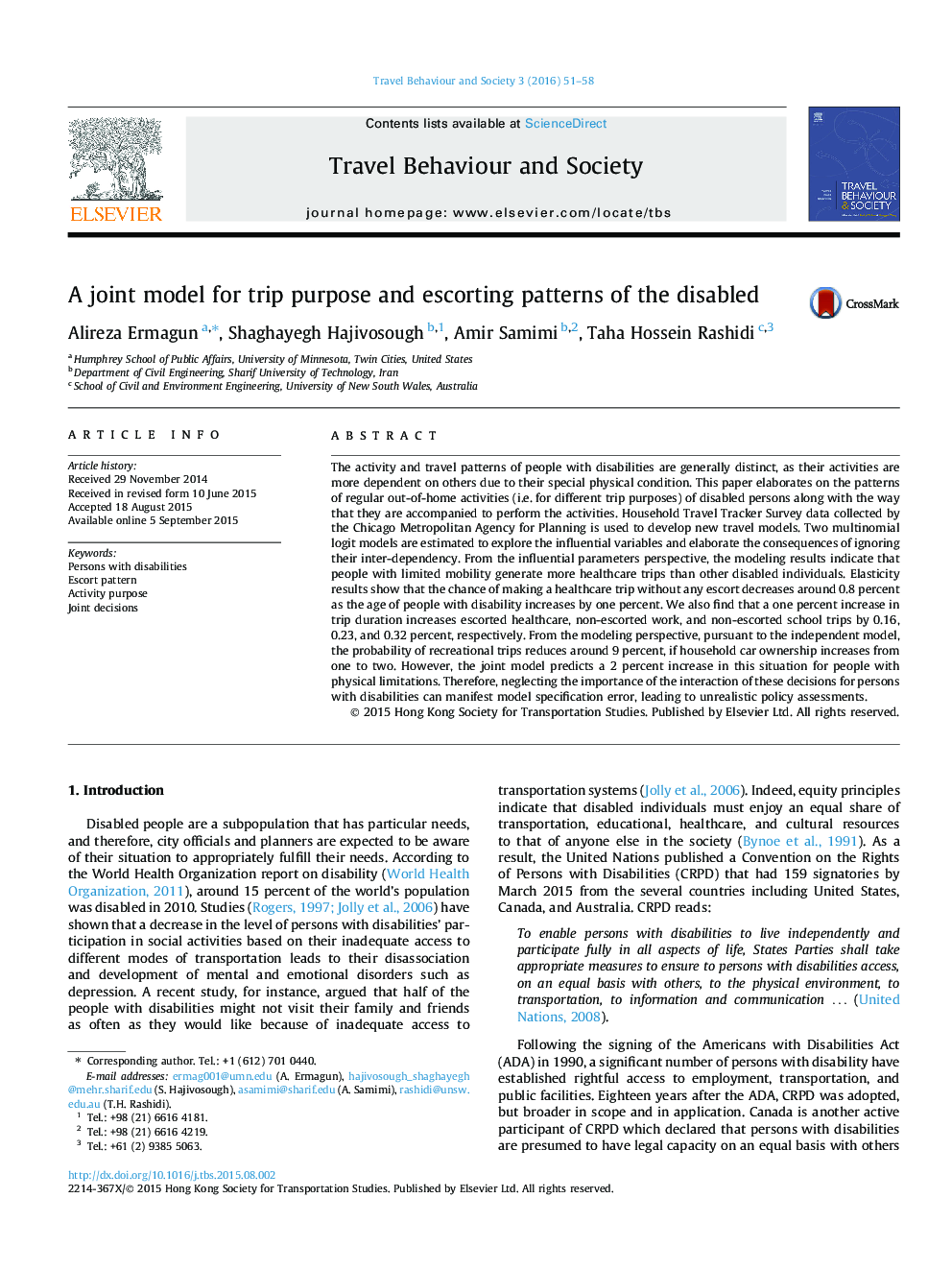| کد مقاله | کد نشریه | سال انتشار | مقاله انگلیسی | نسخه تمام متن |
|---|---|---|---|---|
| 141324 | 162854 | 2016 | 8 صفحه PDF | دانلود رایگان |
• Overlooking the interdependency of activity type and accompaniment decisions misleads policies.
• Elasticities of independent model vary up to 24 times compared with the joint model.
• 1% increase in trip duration will escalate escorted healthcare trips by 0.16%.
• 1% increase in age of disabled persons leads to a decrease of 1.2% in unescorted work trips.
The activity and travel patterns of people with disabilities are generally distinct, as their activities are more dependent on others due to their special physical condition. This paper elaborates on the patterns of regular out-of-home activities (i.e. for different trip purposes) of disabled persons along with the way that they are accompanied to perform the activities. Household Travel Tracker Survey data collected by the Chicago Metropolitan Agency for Planning is used to develop new travel models. Two multinomial logit models are estimated to explore the influential variables and elaborate the consequences of ignoring their inter-dependency. From the influential parameters perspective, the modeling results indicate that people with limited mobility generate more healthcare trips than other disabled individuals. Elasticity results show that the chance of making a healthcare trip without any escort decreases around 0.8 percent as the age of people with disability increases by one percent. We also find that a one percent increase in trip duration increases escorted healthcare, non-escorted work, and non-escorted school trips by 0.16, 0.23, and 0.32 percent, respectively. From the modeling perspective, pursuant to the independent model, the probability of recreational trips reduces around 9 percent, if household car ownership increases from one to two. However, the joint model predicts a 2 percent increase in this situation for people with physical limitations. Therefore, neglecting the importance of the interaction of these decisions for persons with disabilities can manifest model specification error, leading to unrealistic policy assessments.
Journal: Travel Behaviour and Society - Volume 3, January 2016, Pages 51–58
